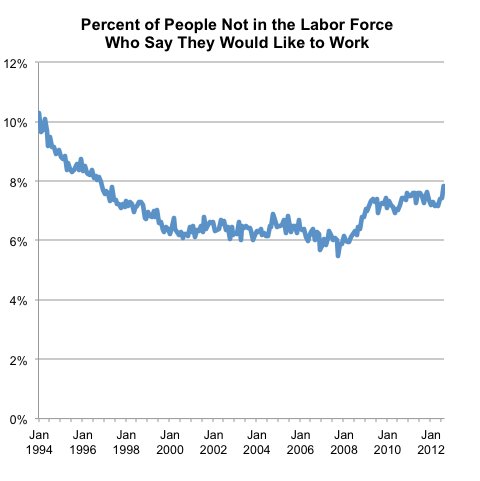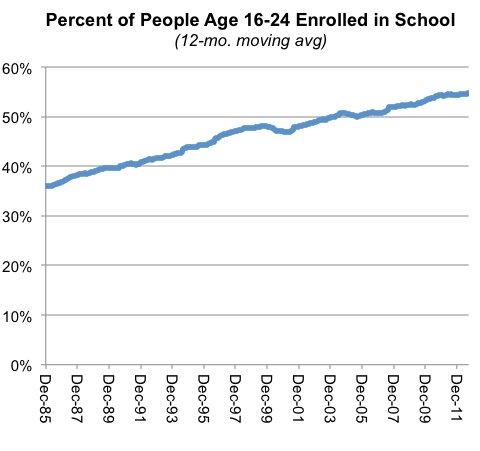
CATHERINE RAMPELL
Dollars to doughnuts.
The number of people not in the labor force — that is, neither working nor looking for work — rose by almost 600,000 in August.
Most of the Americans who are “not in the labor force” are categorized as such because they are retired, stay-at-home parents or otherwise not interested in holding a job. But there are also a lot of people who really want to work but have decided not to bother looking for jobs because they think the job market is too discouraging or because they are too busy with training, family responsibilities and so forth.
This group of people who want to work but aren’t looking are sometimes referred to as the shadow unemployed. Their share of the not-in-labor-force population has generally been rising since the recession began almost five years ago:
 Source: Bureau of Labor Statistics
Source: Bureau of Labor Statistics
In December 2007, when the recession officially started, 5.9 percent of people counted as “not in labor force” said they wished they were working. As of last month, that share was 7.8 percent.
Surprisingly, the share of people who weren’t in the labor force but still wanted jobs was actually higher in the mid-1990s, when the Labor Department first started collecting these numbers. In January 1994, 10.3 percent of the people who were not actively looking for a job said they actually wished they were working.
I’m not sure why that’s the case; given how poor the job market is today, you’d think an especially high share of people who have dropped out of the labor force did so because they were discouraged, not because they stopped wanting a job.
One possible reason the share of people out of the labor force who want work isn’t higher is that school enrollment has risen sharply since the 1990s. A lot of out-of-the-labor-force Americans — particularly young people, and particularly young women — have resigned themselves to not finding a job anytime soon and have decided instead to invest in improving their skills while they wait for the economy to improve.
 Source: Bureau of Labor Statistics
Source: Bureau of Labor Statistics
Article source: http://economix.blogs.nytimes.com/2012/09/07/not-looking-but-still-wanting-to-work/?partner=rss&emc=rss